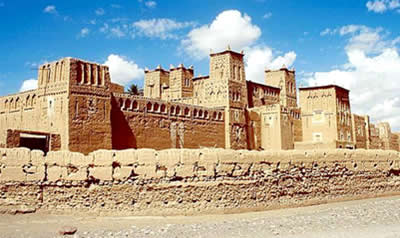 |
| Sa’did Dynasty |
The Sa’did dynasty, also commonly known as the Sa’dians, ruled Morocco from the mid-16th century until 1659. The dynasty was plagued with internal and external strife but was credited with uniting Morocco, defeating the colonial Portuguese, and invading the great West African Songhai Empire.
The name of the dynasty was derived from their ancestry in the tribe of Banu Sa’d, and they were the first Moroccan dynasty claiming the title sharif, or descendants of the prophet Muhammad.
The dynasty rose to power by challenging the ruling Wattasids, a declining dynasty despised for allying with the Portuguese and allowing the European power to gain a strong foothold in Morocco. Infighting of rival groups vying for power persisted for much of the early Sa’did rule and extended to neighboring Ottoman-controlled areas.
  |
During the 1540s and 1550s, the increasing success and military victories of the Sa’did leader, Muhammad al-Shaykh, forced the Portuguese to withdraw from many cities until their presence in Morocco was restricted to a small number of forts.
In 1578, the Battle of the Three Kings was waged, in which the Portuguese king and two Moroccan kings died. The Moroccans were victorious and gained a measure of international respect for defeating a European power.
Now led by Ahmad al-Mansur, the Sa’dids began to have closer ties to the Ottomans, yet remained fully independent. As well, they established relations with Spain and England, the latter gaining exclusive trade in Morocco under the Barbary Company.
Al-Mansur also led a drive to form a professional military and introduced extensive use of rifles in Moroccan warfare. With his army and powerful alliances, al-Mansur steadily united the country under a despotic regime; as a consequence, a sense of Moroccan unity and national identity took root for the first time.
With his expansion hemmed in by Ottoman lands in the east, in 1590 al-Mansur made a power play to control the lucrative West African trade controlled by the Songhai Empire to his south. Al-Mansur first tried to extort taxes from the Songhai ruler Askia Ishaq II but was promptly rebuffed.
Al-Mansur then made the decision to invade Songhai in 1591 under the false pretense of uniting Muslims under his authority, but his expansionist and economic ambitions were transparent. The resulting Moroccan victory ended the Songhai Empire and reduced Timbuktu, the internationally respected center of West African scholarship, to a dusty outpost, devoid of scholars of any consequence.
In 1593, al-Mansur died, instigating the fractious disintegration of the Sa’did dynasty. Once again, internal division and European political and military influence became a hallmark of the Moroccan state.
By 1613, the country had split into two kingdoms and the economy was in shambles. Various rival European states allied with factions in order to gain control of Morocco for their own financial benefit, acting to further the chaotic destruction of the Sa’dids.
Internal religious war, assassinations, and a string of decadent rulers, lacking legitimacy or leadership, finally became too much for the Sa’dids to overcome. In 1669, the Alawi sharifs successfully defeated all contenders to become the power brokers in Morocco.